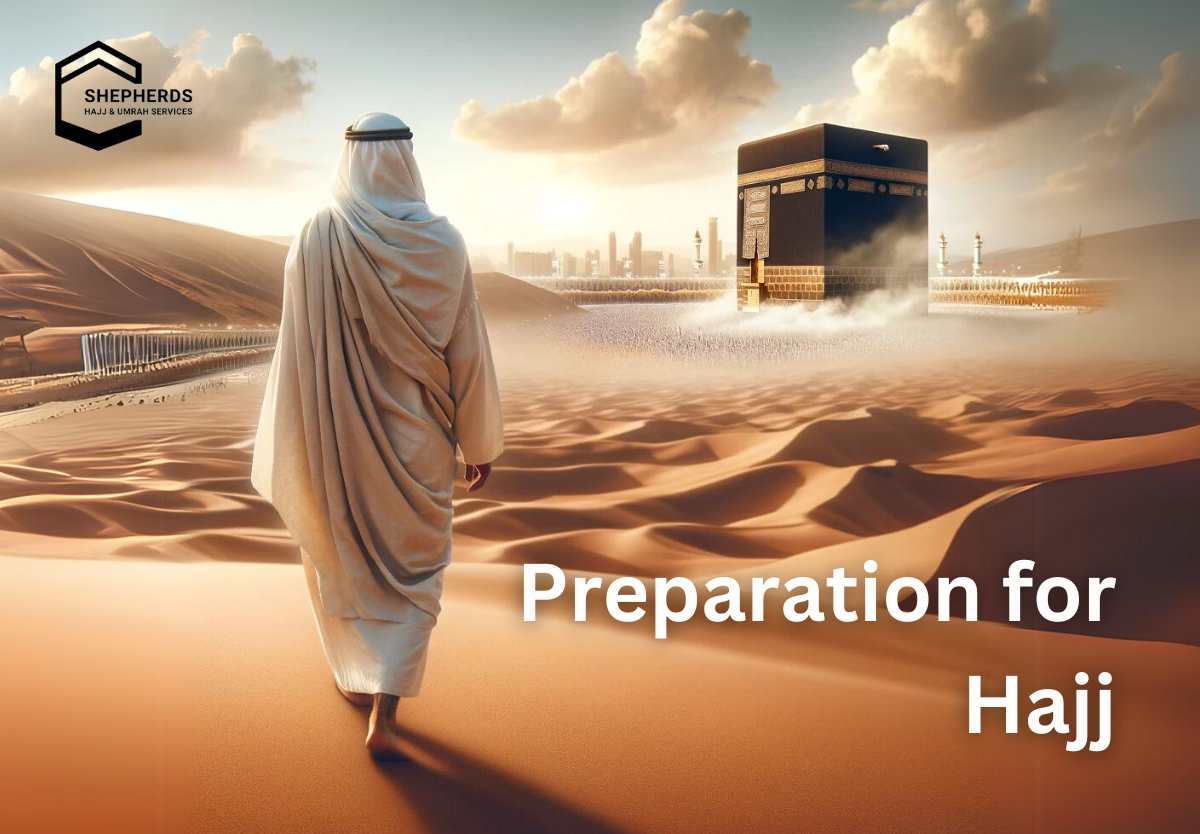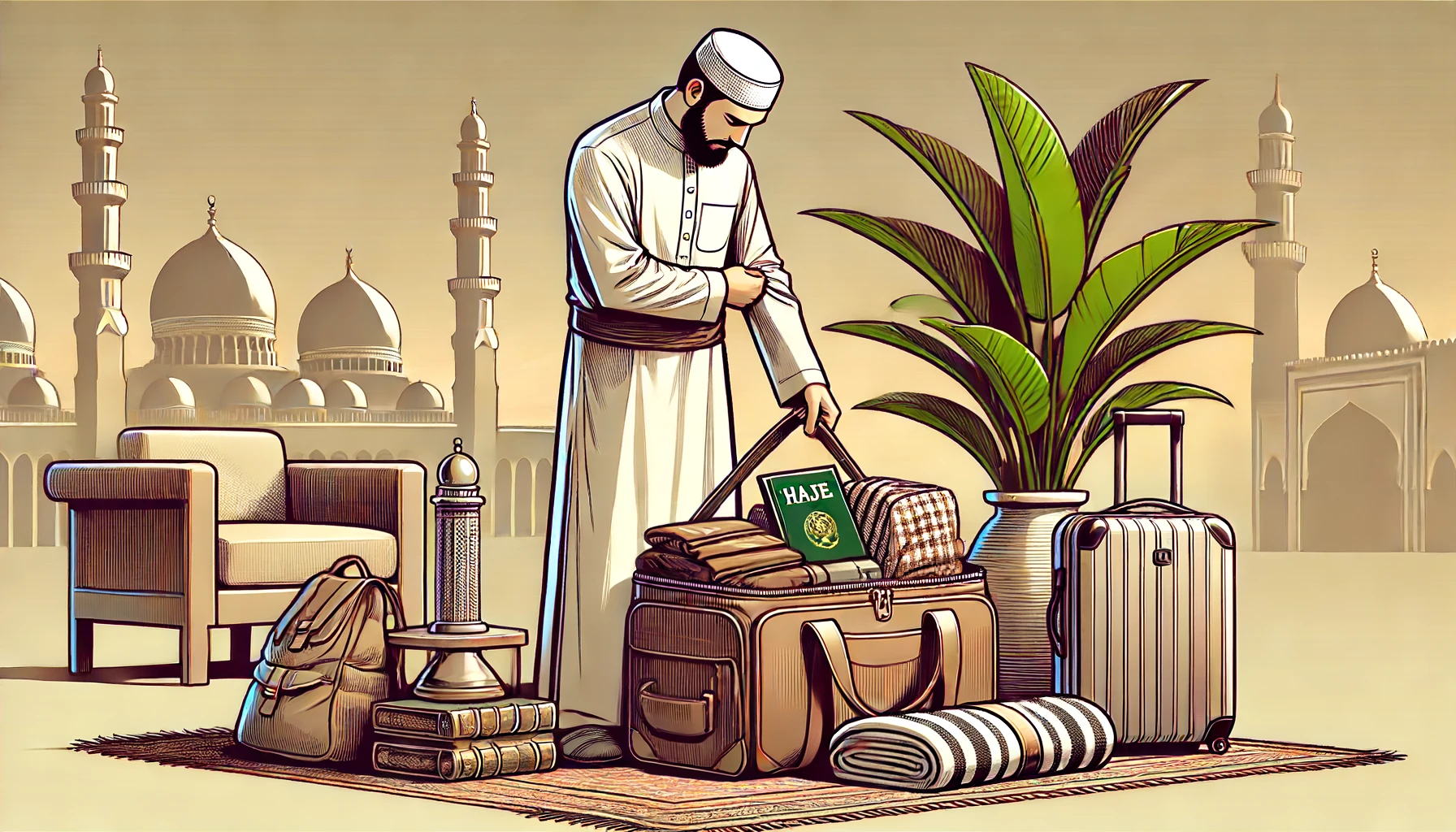Embarking on the sacred pilgrimage of Hajj is a profound spiritual journey that requires meticulous preparation. Whether you’re a first-time pilgrim or have performed Hajj before, understanding the steps, physical demands, packing essentials, and spiritual readiness is crucial. This guide will walk you through the essential aspects of preparing for Hajj to ensure a fulfilling and well-organized experience.
Steps of Hajj: A Step-by-Step Breakdown
Understanding the rituals performed during Hajj is fundamental to your preparation. The journey comprises several significant steps:
1. Ihram
Ihram marks the beginning of your spiritual journey. It involves wearing special white garments and entering a state of spiritual purity. Men wear two white seamless cloths, while women wear modest clothing that covers their entire body except for their face and hands. During Ihram, pilgrims must refrain from certain activities such as cutting hair or nails and engaging in marital relations.
2. Tawaf
Tawaf involves circumambulating the Kaaba seven times in a counterclockwise direction. This act symbolizes the unity of believers in the worship of the One God. Pilgrims often recite prayers and supplications during Tawaf.
3. Sa’i
Sa’i commemorates Hagar’s search for water for her son Ishmael by walking seven times between the hills of Safa and Marwah. This ritual reminds pilgrims of the importance of perseverance and faith.
4. Standing at Arafat (Wuquf)
The Day of Arafat is considered the pinnacle of Hajj. Pilgrims spend the day in prayer and reflection at the plain of Arafat, seeking forgiveness and making supplications.
5. Muzdalifah
After sunset on the Day of Arafat, pilgrims travel to Muzdalifah to collect pebbles for the next ritual and spend the night under the open sky, engaging in prayer and reflection.
6. Ramy al-Jamarat
This ritual involves throwing pebbles at three pillars representing Satan, symbolizing the rejection of evil and temptation.
7. Eid al-Adha
On this day, pilgrims participate in the sacrifice of an animal to commemorate Prophet Ibrahim’s willingness to sacrifice his son as an act of obedience to God.
8. Tawaf al-Ifadah
This is another circumambulation of the Kaaba performed after returning from Mina.
9. Farewell Tawaf (Tawaf al-Wada)
Before leaving Mecca, pilgrims perform a final circumambulation as a farewell gesture to the holy city.
For more detailed information on who must participate in Hajj, visit this resource.
Physical Preparation for Hajj
Hajj involves extensive walking and standing, making physical fitness an important aspect of your preparation:
Walking Routine
Start a walking routine months before your departure to build stamina. Aim for at least 30 minutes of brisk walking daily to condition your body for long distances.
Strength Training
Incorporate exercises that strengthen your legs and core, such as squats, lunges, and planks. These exercises will help you manage the physical demands of Hajj.
Hydration and Diet
Maintain a balanced diet rich in fruits, vegetables, lean proteins, and whole grains. Staying hydrated is crucial; drink plenty of water throughout your preparation period.
Understanding why Hajj is important can also motivate you to stay committed to your physical preparations. Learn more here.
Packing List for Hajj
Packing smartly ensures you have all necessary items without overburdening yourself:
Religious Essentials
- Ihram Clothing: Ensure you have multiple sets.
- Prayer Mat: For comfort during prayer times.
- Quran: A small, portable copy.
- Dua Book: For specific supplications during various rituals.
Comfortable Clothing
- Loose, Breathable Clothes: Suitable for hot weather.
- Comfortable Walking Shoes: Essential for long distances.
- Socks: Several pairs to keep feet comfortable.
Practical Supplies
- Toiletries: Toothbrush, toothpaste, soap, shampoo.
- Sunscreen: To protect against sunburn.
- Medications: Any prescribed medications plus basic first aid supplies.
- Reusable Water Bottle: To stay hydrated.
- Portable Charger: For keeping electronic devices charged.
- Snacks: Non-perishable items like nuts and dried fruits.
For a comprehensive checklist on what to pack for Hajj, refer to various resources available online.
Spiritual Preparation for Hajj
Deepening your faith and intentions before embarking on this holy journey is paramount:
Intentions (Niyyah)
Reflect on your intentions for performing Hajj and purify them. Ensure that your primary goal is seeking closeness to Allah and fulfilling this pillar of Islam sincerely.
Dua and Supplications
Familiarize yourself with specific duas related to different rituals of Hajj. These supplications enhance your spiritual experience and keep you focused on worship.
Knowledge
Educate yourself about the virtues of Hajj and its significance in Islam. Understanding its historical context and spiritual benefits will enrich your experience.
The spiritual benefits of Hajj are immense. To delve deeper into these benefits, visit this page.
Conclusion
Preparing for Hajj is not just about logistics; it’s about readying your mind, body, and soul for a transformative experience. By understanding the steps of Hajj, enhancing your physical fitness, packing wisely, and spiritually preparing yourself, you can approach this pilgrimage with confidence and devotion.
For further insights into what Hajj entails and its virtues, explore what is Hajj and the virtues of Hajj.
May your journey be blessed and your efforts accepted.
Read our detailed Hajj Guide. And Contact Shepherds – Hajj and Umrah Agency if you need.





